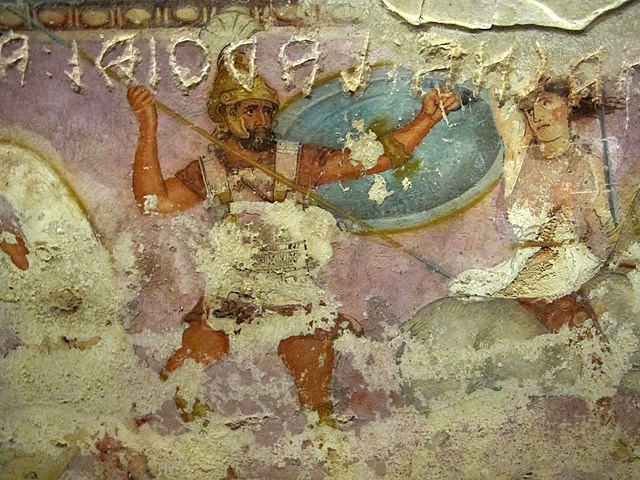In Greek mythology, Hippolyta, or Hippolyte, was a daughter of Ares and Otrera, queen of the Amazons, and a sister of Antiope and Melanippe. She wore her father Ares' zoster, the Greek word found in the Iliad and elsewhere meaning "war belt". Some English translations prefer "girdle". Hippolyta figures prominently in the myths of both Heracles and Theseus. The myths about her are so varied it is thought that they may be about different women. The name Hippolyta translates as "she who unleashes the horses", deriving from two Greek roots meaning "horse" and "let loose".
Hippolyta from Promptuarii Iconum Insigniorum
Heracles Obtaining the Belt of Hyppolita by Nikolaus Knüpfer
A wax sculpture of Hippolyta at Samsun.
In Greek mythology, the Amazons are portrayed in a number of ancient epic poems and legends, such as the Labours of Heracles, the Argonautica and the Iliad. They were a group of female warriors and hunters who were known for their physical agility, strength, archery, riding skills, and the arts of combat. Their society was closed to men and they only raised their daughters and returned their sons to their fathers, with whom they would only socialize briefly in order to reproduce.
Wounded Amazon of the Capitoline Museums, Rome
A Greek fighting an Amazon; detail from painted sarcophagus found in Italy, 350–325 BC
"Amazon preparing for battle" (Queen Antiope or Hippolyta) or "Armed Venus", by Pierre-Eugène-Emile Hébert, 1860, National Gallery of Art, Washington, D.C.
Departure of the Amazons, by Claude Deruet, 1620, Metropolitan Museum of Art, New York







